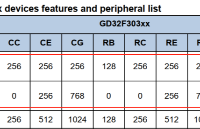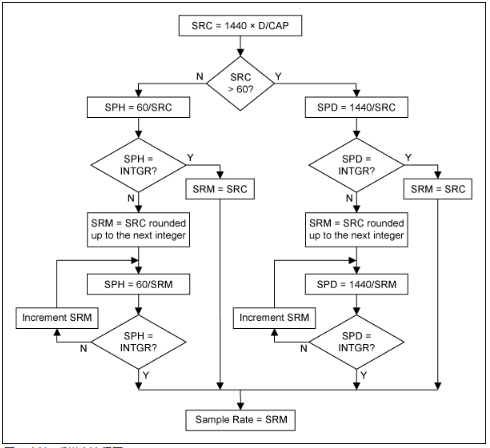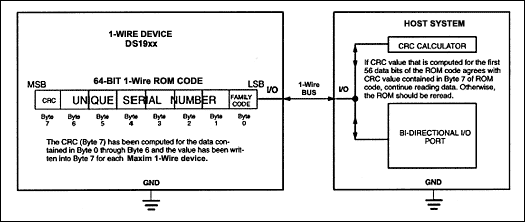iButton data-logger calibration and NIST certificate FAQs
Abstract: This application note answers typical questions (FAQs) about calibration, software correction, certification, NIST, and traceability. The questions and answers apply to iButton data logger models of the DS1922 series and the DS1923.
Data-logger calibration
What is a data logger?
A data logger is a device that logs data at a predetermined schedule. The data may come from a digital data source or a sensor that delivers digital data. The DS1922 devices contain a temperature sensor. The DS1923 Hygrochron? contains a temperature sensor and a humidity sensor.
What is calibration?
Calibration, also known as trim, refers to the production step where the loggers are exposed to reference temperatures and are instructed to measure those temperatures. The trim takes place at the factory and involves a high reference temperature, Tr1, and a low reference temperature, Tr2. A third reference temperature, Tr3, is used for postprocessing of temperature readings (see below). Table 1 shows which reference temperatures apply to each logger. Application note 2810, "DS2422 Trim Procedure and Software Correction," describes the trim procedure during which individual trim parameter values are computed and written to logger-internal registers.
Table 1. Logger specific reference temperatures (nominal values)
|
|
|
|
|
|
DS1923 |
|
|
|
|
|
|
|
|
|
|
|
|
|
The humidity sensors used in the DS1923 are trimmed by the manufacturer. Sensor accuracy can also be improved through postprocessing (see below).
What is software correction?
Accuracy can generally be improved through software correction, also referred to as postprocessing. The algorithm for temperature correction is described in the data sheets for the DS1922L/T and DS1923. Besides the reference temperature, Tr1 (nominal value), the algorithm uses two pairs of data: the actual reference temperature value (measured with a laboratory standard, calibrated platinum resistance thermometer, PRT) paired with the value reported by a trimmed logger (i.e., the conversion result) for Tr2 and Tr3 (Table 1). These four numbers are determined in a separate step after the trim, and written in 16-bit format to the calibration memory (pages 18 and 19) of each logger. Note: software correction does not apply to the DS1922E. With the trim points so close together, software correction would not yield any accuracy improvements for this device.
The algorithm for correcting humidity measurements is described in the DS1923 data sheet. This algorithm uses three pairs of data: the actual reference humidity value, and the value reported by the logger (i.e., the conversion result) for the reference humidities 20%, 60%, 90% RH (RH = relative humidity). These six values are taken at +25°C while the logger is in a NIST-traceable humidity chamber; they are written in 16-bit format to the calibration memory following the data for the temperature software corrections. Then the loggers are exposed to 30%, 50%, 70% and 80% RH. Using the data stored in the calibration memory, the humidity conversion results are software corrected and verified for compliance with the tolerance specified in the data sheet.
Certification
Certification is the issuance of a document ("certificate") guaranteeing NIST-traceable serial numbers of the equipment used in production of the data loggers (see below). Such certificates also confirm that the data loggers listed in the document have been thoroughly tested following Maxim's Quality Assurance procedures, and that the devices meet the performance accuracy specifications in the data sheet over the stated range.
Frequently Asked Questions (FAQs)
What is NIST?
NIST is the abbreviation of the U.S. Commerce Department's National Institute of Standards and Technology. NIST solves science and technology problems today, so that U.S. industry and science can produce the improved products, services, and technologies of tomorrow.
What is NIST traceability?
Traceability is the establishment of an unbroken chain of comparisons to stated references. The Chemical Science and Technology Laboratory (CSTL), a subdivision of NIST, calibrates instruments that measure temperature, fluid flow, pressure, vacuum, humidity, volume, and liquid density. NIST traceability is established by using NIST-calibrated instruments.
What NIST traceability information is provided in the certificate?
The certificate lists the serial numbers of the reference instrumentation in use; the serial number(s) (also known as ROM ID or registration number) of the data loggers for which the certificate is requested; and the date when the data loggers underwent their final test at the factory. An example certificate is available for download (PDF).
What is reference instrumentation? How are they used?
Reference instrumentation for temperature and humidity loggers includes temperature sensors (RTDs) and humidity chambers that are calibrated to NIST-traceable standards. This instrumentation is used to verify the accuracy of the temperature trim and to provide the reference data for the software correction.
What is an RTD?
An RTD (resistance temperature detector) is also referred to as a PRT (platinum resistance thermometer). The RTD is renowned for high accuracy and long-term stability. Maxim uses MINCO oil-filled thermometers, model #S9689PA5X12.
What is a humidity chamber?
A humidity chamber is a container with well-controlled temperature and humidity. A NIST-traceable humidity chamber (Thunder Scientific, model 2500) is used by Maxim to test and provide reference data for software correction for the DS1923 loggers.
For which data-logger models can I request certificates?
Certificates can be requested for the DS1922L, DS1922T, DS1922E, and DS1923. The certificate pertains to the temperature function only. The certification for the humidity function is planned, but not yet available.
How do I request a certificate?
Point your web browser t Thermochron NIST Traceable Certificates. Here you enter one or more ROM IDs of the data loggers for which the certificate is requested (see Figure 1). The 16-character code can be read from the marking on the logger and entered manually, or it can be electronically read from the device, copied, and then pasted into the entry field. For electronic reading one needs a 1-Wire? adapter and suitable software such as the OneWireViewer installed.
After the one or more ROM IDs are entered (one per line or delimited by commas or spaces), click on "Request Certificate". A few seconds later the requested certificate appears as a PDF document in your browser. You should save the certificate and give it a new name.
When I request a certificate for my logger, I always get an error message "Device(s) not found:" How do you explain that?
Data loggers of the DS1922 and DS1923 series have been in production for several years. The certification service was introduced in 2009. The database for the creation of certificates includes only data loggers manufactured in 2009 or later and a portion of devices manufactured in 2008.
The security field of the certificate properties in the Acrobat PDF file reads "No Security". How do I know that the certificate is genuine?
At the end of the certificate there is a 40-character string called Authentication Code. If a forged document is suspected, please send the PDF file (with all pages) to Maxim at: support.maxim-ic.com. We will check the validity of the certificate.
 電子發(fā)燒友App
電子發(fā)燒友App


























評(píng)論